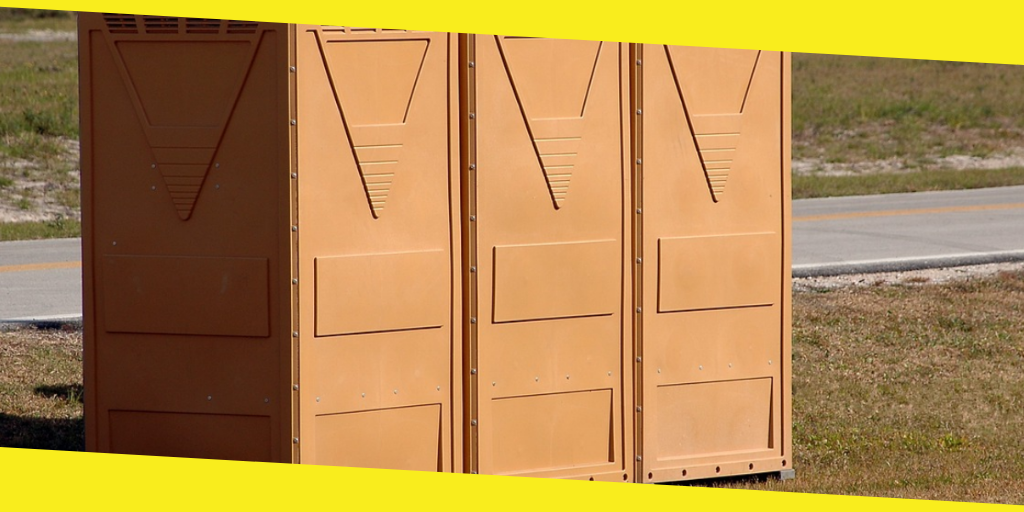Portable Toilets – Basic Need of the Public
This post was last updated on February 20th, 2020
The biological process of excretion is a necessity for the proper functioning of the human body. As long as the body doesn’t excrete the waste out of it, the body is prone to all kinds of diseases. Proper functioning of the body is essential for living a healthy life and following the daily activities of life. Excretion is one important process in the human body where the waste, be it in liquid or solid form, has to be rejected out of the body daily so that the body functions just the way it is supposed to. All the biological processes and needs are met and completed through different activities and all these activities are necessary for a human body to function at its best, be it the intake of food and water, the right amount of exposure to sunlight, rain or even breathing fresh air. All these are activities everyone does multiple times in a day and some go by naturally and unnoticed, while on some days certain activities get paid extra attention.
Urgent situations
In cases like when one feels very hungry but is in a condition to not have a bite of anything, it is when that person starts valuing all kinds of food. Be it also in the case when one is suffering from severe health issues and is wheezing, it could be only then that one values and seeks air the most. Likewise, excretion is an indispensable process of a human body and needs to be looked upon as equally important as any other process. But, with minimal public facilities for excretion, in urgencies, people tend to urinate and excrete in the open, which is unacceptable. Use these loos for do’s and finesse is served for sure with the portable toilet options that are offered. Also, in many under-developed countries, the impoverished communities still suffer the plight of not having proper facilities in the form of toilets for these extremely inevitable processes for a well-functioning human body; and these people have completely relied on open defecation.
Evolution of portable toilets
The primitive toilet structure was that of these portable toilets, where the toilets were placed outside the houses. It was only later, after the advent of inside plumbing that the concept of portable toilets vanished from the households. The very first portable toilets emerged from the idea of easily accessible toilets for the shipyard employees, where they had to walk long distances to use the toilets. Portable toilets were then provided for the employees, thereby making it easy for both the employees as well as the employers, since, when the toilets used to be someplace far away, the productivity used to reduce and therefore the advent of portable toilets made the daily activities more organized. These first portable toilets were made out of wood and metal, which when got wet exuded stenches that were intolerable and the possibility for the long usage of these toilets by keeping it in clean and sanitary conditions seemed almost impossible. Further modifications and radical improvements made the portable toilets more durable. These improvements and modifications include the revamping of the structure with fiberglass in the 1970’s, which was then the best material to manufacture panels for such toilets. As time passed, polyethylene was used in the construction and assembling of portable toilets. Although polyethylene was brought into the portable toilet construction technique, it couldn’t replace the permanent materials that were used in the construction, even when polyethylene was proved to be the product that gave the portable toilets better sanitary conditions.
Manufacture of portable toilets
The raw materials used for portable toilet construction are polyethylene sheets or any sort of light-weight sheets that ensures durability, which form the toilet unit, pump and holding tank for the sewage system to work efficiently and also fasteners which include screws, nails, hinges, rivets, and bolts. These integral parts of a portable toilet are manufactured in ways that meet the requirement of the toilets:
- Toilet unit: The toilet units are manufactured using light-weight sheets which form the enclosure of the toilet, which is fastened by different fasteners such as nails, bolts, screws, and hinges. The top space is covered with the same sheet but is not fastened with these fasteners because this space is for the installation of the tank and it will need frequent cleaning and for this purpose it is not tightly fastened but is locked in a way that it is not opened unnecessarily. The toilet seat which is made of plastic is fitted over the toilet bowl which is further hinged to the assembly. The drain system along with the flushing facility is also provided with connecting it to the tank and further collection of the waste.
- Cabana: Cabana is the four walls that surround the toilet set up inside and it is made using light-weight panels on all sides to form a box-like structure. A rounded top and flat bottom are provided for the toilet and depression for the installation of the toilet seat. A front door with a lock setup which displays a “vacant” and “non-vacant” status of the toilet.
The waste should be disposed of, decomposed and processed properly by conforming to the rules of the state or country so that it does not create any form of inconvenience or trouble to the surrounding inhabitants or citizens of the local areas. Portable toilets are always the best option for certain workplaces, public places and also places where toilets and disposal methods have seen no kind of technological turns; it stays the best option when it is kept clean and serves the purpose properly by maintaining a sanitary environment.
Recommended For You
Attention: All the Young Techies in Bangalore
Most Inside
Most Inside offers high-quality recommendations and valuable updates to enhance all aspects of your life, providing premium guidance and enriching experiences.





